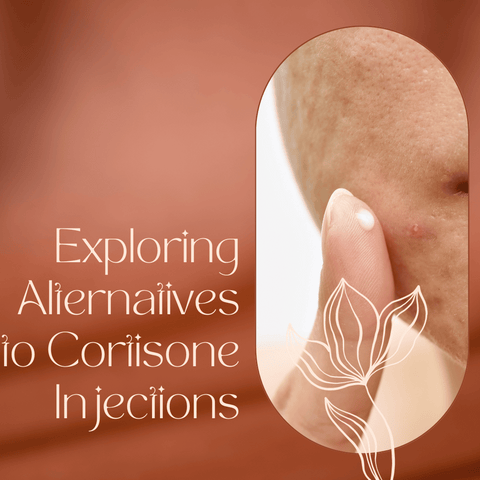Cortisone injections can be effective in the treatment of cysts in certain situations. The efficiency of cortisone injections in cyst treatment, on the other hand, is dependent on a number of factors, including the type of cyst, its location, and the underlying reason. Cyst kinds, inflammatory response, pain relief, brief relief, administration, side effects, danger of rupture, consultation, and alternative treatments are all important factors to consider.
Understanding Cysts and the Need for Effective Treatment
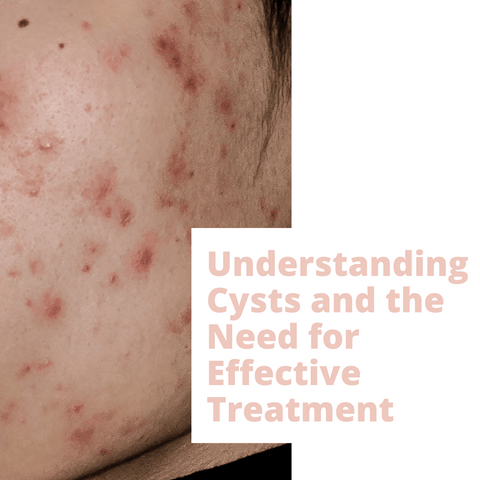
Cysts are frequent medical diseases that can occur in a variety of locations across the body. Understanding cysts and the importance of proper treatment is critical for managing these frequently benign but potentially annoying or even deadly growths. A cyst is a sac or pocket that contains fluid, air, or other materials. Cysts can occur in or on a variety of tissues throughout the body, including the skin, ovaries, kidneys, and internal organs. They are classified into several categories, including sebaceous cysts, ganglion cysts, ovarian cysts, and many others, each with its own set of characteristics and causes. If you have a cyst or are concerned about one, it's critical to see a doctor for an accurate diagnosis and advice on the best treatment choices. A proper diagnosis and assessment of the cyst's specific characteristics are required for effective treatment. In many cases, prompt and effective therapy can relieve symptoms and prevent consequences.
What Are Cysts and Their Impact on the Skin?
Skin cysts are noncancerous growths that can appear beneath the surface of the skin. They are often filled with fluid, keratin (a protein found in the skin's outer layer), or other materials. Skin cysts are classified as epidermoid cysts (Sebaceous Cysts), pilar cysts, milium (Milia), dermoid cysts, steatocystoma multiplex, and mucous cysts (Mucinous Cysts). The effect of skin cysts on the skin varies, but some common impacts include cosmetic issues, pain and discomfort, infection risk, rupture, scarring, and chronic or recurring cysts. It's critical to see a doctor for an accurate diagnosis and treatment suggestions, especially if a skin cyst is causing pain, discomfort, or other issues.
Challenges in Managing Cystic Acne
Because of the severity of the condition and its propensity to cause substantial physical and mental distress, managing cystic acne can be extremely difficult. Deep, painful, inflammatory cysts grow beneath the skin's surface, defining cystic acne. Severe inflammation, scarring risk, treatment resistance, systemic therapy requirements, long-term care, psychological impact, patient compliance, personalised treatment, combination medicines, and side effects are some of the major issues in managing cystic acne. Individualised treatment, patience, and persistent follow-up care are all essential components of successful cystic acne therapy. If you or someone you know has cystic acne, it is critical that you get competent medical advice and treatment.
Exploring Treatment Options for Cysts
Cyst treatment options differ depending on the type of cyst, its location, size, symptoms, and the possibility of consequences. Observation (watchful waiting), drainage, corticosteroid injections, antibiotics, surgical removal (excision), laser therapy, medicines, needle aspiration, electrocautery or cryotherapy, and intralesional sclerotherapy are some popular cyst treatment methods. To find the best treatment choice for your specific type of cyst and its characteristics, speak with a healthcare physician or specialist. The individual's location, size, symptoms, and general health will all affect which treatment is selected. In some cases, a combination of treatments may be recommended to achieve the best results.
The Role of Cortisone Injections in Cystic Acne Treatment
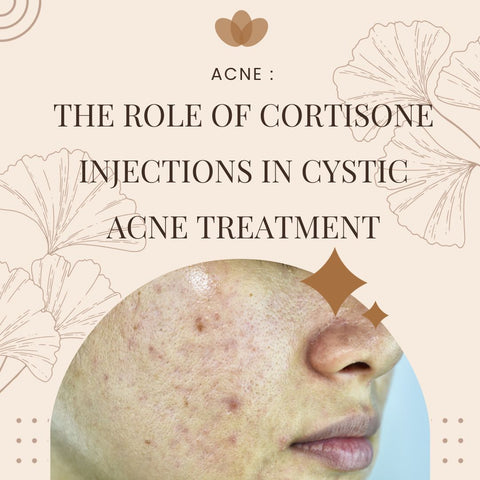
Cortisone injections can help treat cystic acne, especially if the acne is severe. Cortisone injections include injecting a corticosteroid medicine, usually a synthetic form of cortisol, into the cystic acne lesion. Corticosteroids are powerful anti-inflammatory agents. The function of cortisone injections in the management of cystic acne:
-
Reduced Inflammation: The main goal of cortisone injections used to treat cystic acne is to significantly reduce inflammation. Deep inflammation is a feature of cystic acne lesions, which can be excruciatingly painful. Cortisone injections can quickly reduce inflammation, relieving discomfort and pain.
-
Healing Promotion: Cortisone injections aid in the healing of cystic acne lesions by reducing inflammation. This can hasten the healing process and lessen the chance of scarring, which is a common worry with severe cystic acne.
-
Scarring Prevention: Cortisone injections can be especially helpful in halting or reducing the appearance of scars connected to cystic acne. By lowering inflammation and accelerating the healing process, the tissue damage that causes scarring can be avoided.
-
Spot treatment: Individual cystic acne lesions are typically treated with cortisone injections on a spot-by-spot basis. The most severe and inflamed cysts can now be precisely and specifically treated thanks to this.
If you have cystic acne, you must consult with a dermatologist or healthcare provider to determine whether cortisone injections are appropriate for your specific condition. The severity of your acne, your medical history, and your specific needs will all influence your treatment strategy. Cortisone injections, when used wisely and under the supervision of a medical professional, can be an effective component of a comprehensive treatment plan for severe cystic acne.
How Cortisone Injections Work
Cortisone injections, also known as corticosteroid injections, contain a synthetic version of cortisol, a hormone that the adrenal glands naturally produce. These injections are frequently used to treat a wide range of medical disorders, particularly those involving inflammation and immune system responses. Cortisone injections operate as follows:
-
Anti-Inflammatory Action: Cortisone injections are largely anti-inflammatory medicines. They suppress the immune system and inflammatory processes in the body. Inflammation is a complicated set of events that occur as a result of tissue damage, infection, or autoimmune illnesses.
-
Immune System Suppression: Cortisol injections also reduce the immune system's ability to produce an inflammatory response. This can be useful in cases where an overactive immune response causes injury to the body, such as autoimmune illnesses or severe allergic reactions.
-
Rapid Pain Relief: Injections of cortisone reduce inflammation and its accompanying symptoms relatively quickly. In many cases, patients report less pain, swelling, and discomfort within a day or two of receiving the injection.
-
Treatment that is Highly Targeted: Cortisone injections are given directly to the affected area, enabling extremely targeted treatment. They can, for example, be injected into a specific joint to treat arthritis-related inflammation or into a cystic acne lesion to reduce local inflammation.
-
Cortisone Injections Can Have Both Short-Term and Long-Term Effects: Cortisone injections can have both short-term and long-term effects. In the short term, they provide immediate relief from symptoms. However, long-term use can cause skin thinning, bone density loss, and adrenal gland suppression, which can impair the body's ability to produce its own cortisol.
Efficacy of Cortisone Injections in Reducing Cysts
In some cases, cortisone injections might help reduce the size and irritation of cysts. The efficacy of cortisone injections in cyst treatment is determined by several factors, including the type of cyst, its underlying aetiology, and its location. Here's a closer look at the potential usefulness of cortisone injections in cyst reduction, including the inflammatory component, swelling reduction, pain relief, temporary solution, rupture risk, administration and expertise, and cyst type. They can evaluate your unique condition, identify the type of cyst, and discuss the potential benefits and risks of cortisol injections.
Understanding the Benefits and Limitations
Understanding the benefits and drawbacks of cortisone injections is critical for making informed medical treatment decisions. Cortisone injections, which contain synthetic forms of the hormone cortisol, provide unique benefits in some conditions, but they also have drawbacks. Here's a breakdown of the advantages and disadvantages of cortisone injections:
Benefits:
-
Anti-Inflammatory Action: Cortisol injections are extremely effective at reducing inflammation in the body. They can provide immediate relief from pain, swelling, and discomfort caused by a variety of conditions, including joint inflammation, allergic reactions, and skin conditions such as cystic acne.
-
Local Treatment: Cortisone injections can be given directly to the site of the problem. This localised treatment allows for precise targeting of the affected area while minimising potential side effects to the rest of the body.
-
Pain Relief: Cortisone injections frequently provide immediate pain relief, making them a valuable option for conditions that cause significant pain, such as arthritis, tendonitis, or bursitis.
-
Swelling Reduction: Cortisol's anti-inflammatory properties aid in the reduction of swelling and fluid accumulation in tissues, which can be especially beneficial in conditions characterised by edoema or inflammation.
-
Scarring Reduction: In dermatology, cortisone injections can reduce inflammation in certain skin conditions, assisting in the prevention or reduction of scarring.
-
Adjunct Therapy: Cortisone injections can be used in conjunction with other treatment modalities to manage a range of conditions, including physical therapy, medications, and lifestyle changes.
Limitations:
-
Temporary Relief: Cortisone injections provide only short-term relief, usually lasting a few weeks to months. They are not a long-term solution for chronic conditions and may have to be repeated.
-
Side Effects: Prolonged or frequent use of cortisone injections can cause skin thinning, pigmentation changes, and weakening of local tissues. Long-term use may cause systemic side effects such as immune suppression, bone loss, and hormonal imbalances.
-
Complications: Depending on the accuracy of the procedure and the type of injection, cortisone injections may result in complications such as infection, tissue damage, or cyst rupture.
-
Not a Cure: Cortisone injections do not address the underlying cause of a medical condition. They provide symptomatic relief by reducing inflammation but do not address the underlying cause. Therefore, the condition may return once the effects of the cortisone wear off.
-
Some Conditions: Cortisone injections may not be appropriate for all conditions. They are most effective for inflammatory or immune-mediated conditions and may be less effective for structural issues or degenerative conditions.
-
Individual Response: The effectiveness of cortisone injections varies from person to person. Some people may feel a lot better, while others may only feel a little better.
The potential advantages and disadvantages of cortisone injections for your unique medical condition should be thoroughly discussed with your healthcare provider. Your healthcare provider can assist you in weighing the benefits and drawbacks of cortisone injections and determining whether they are an appropriate part of your treatment plan.
Exploring Alternatives to Cortisone Injections
Depending on the exact ailment and its underlying cause, there are different alternatives to cortisone injections for treating a variety of medical disorders. Nonsteroidal anti-inflammatory drugs (NSAIDs), physical therapy, heat and cold therapy, lifestyle modifications, topical medications, physical modalities, oral medications, biologic injections, alternative and complementary therapies, surgical intervention, and custom orthotics and bracing are some common alternatives to cortisone injections. It is critical to contact a healthcare physician or specialist to identify the best treatment approach for your specific situation. They can assist you in weighing the benefits and dangers of various options in order to make an informed healthcare decision.
Topical Treatments for Cystic Acne
Topical treatments can be beneficial in the treatment of cystic acne, but they should be used in conjunction with other treatments, such as oral drugs, for the best outcomes. Deep, painful cysts occur beneath the skin's surface in cystic acne, making it difficult to treat with topical therapies alone. Prescription topical retinoids, topical antibiotics, topical anti-inflammatory drugs, benzoyl peroxide, azelaic acid, combination products, and corticosteroid injections are some of the most regularly used topical therapies for cystic acne. It's crucial to realise that topical therapies alone may not be enough to treat cystic acne completely, especially in severe cases. Cystic acne frequently necessitates a multifaceted treatment strategy that may involve oral drugs, lifestyle changes, and professional skincare regimens.
Oral Medications for Cyst Management
Oral medicines are frequently used to treat cystic acne and other cyst-related diseases. They are used to treat cysts by addressing the underlying reasons for cyst formation. The following are some of the most commonly used oral cyst medications:
-
Oral Antibiotics: Antibiotics are frequently used to treat cystic acne's inflammation and bacterial proliferation. Antibiotics containing tetracyclines (e.g., doxycycline, minocycline), macrolides (e.g., erythromycin), and others may be utilised. These drugs assist in reducing inflammation and preventing the formation of new cysts. Long-term use, on the other hand, is generally discouraged in order to limit the danger of antibiotic resistance.
-
Oral Retinoids: Isotretinoin (brand name Accutane) is a potent oral retinoid drug used to treat severe and chronic cystic acne that has not responded to other therapies. It reduces sebum production, prevents clogged pores, and reduces inflammation. Isotretinoin has potential adverse effects that necessitate close monitoring and vigilance, including the risk of birth deformities, making it critical to use contraception and follow medical supervision while on the drug.
-
Oral Contraceptives: Certain birth control tablets containing hormones such as oestrogen and progestin can help balance hormonal changes that contribute to cystic acne, especially in women. They are especially useful when hormonal abnormalities play a role in acne development.
-
Corticosteroids: Corticosteroid pills may be prescribed for a brief period of time to rapidly reduce inflammation in severe cystic acne lesions, particularly those that are extremely painful and inflamed. These are typically not a long-term solution but can provide relief while other treatments take effect.
-
Oral Anti-Inflammatory Medications: Nonsteroidal anti-inflammatory drugs (NSAIDs) or other anti-inflammatory medications may be prescribed in some circumstances to assist in managing inflammation and pain caused by specific types of cysts, such as those associated with musculoskeletal disorders.
-
Hormone therapy: Hormonal imbalances can cause cyst formation in conditions like polycystic ovary syndrome (PCOS). Cyst incidence can be decreased and hormones can be regulated with the help of hormone therapy, which can include drugs like spironolactone.
-
Immunosuppressants: Immunosuppressant drugs like methotrexate may be used to lessen inflammation and cyst formation in certain autoimmune conditions where the body's immune system is overactive.
-
Pain Medications: Pain treatments such as ibuprofen or acetaminophen, as well as non-prescription pain relievers, may be used to control pain associated with cysts.
The choice of oral medication will depend on the specific condition, its underlying cause, its severity, and individual factors like age, sex, and general health. This is important to keep in mind. These medications must be prescribed and monitored by a health care provider, typically a dermatologist or other specialist in the field.
Other Invasive Procedures for Cyst Removal
When cysts are large, recurring, symptomatic, or creating difficulties, invasive cyst removal operations may be required. These operations are often performed in a clinical setting by healthcare experts such as surgeons or dermatologists. Incision and drainage (I&D), cyst excision, laser ablation, punch biopsy, electrocautery or electrodesiccation, sclerotherapy, Mohs micrographic surgery, Fine-Needle aspiration (FNA), arthrocentesis, and cystoscopy or endoscopy are some frequent invasive cyst removal treatments. It is critical to speak with a healthcare expert or specialist to decide the best cyst removal approach based on the type, size, location, and individual characteristics. Post-operative care and follow-up are required to ensure adequate healing and to check for any problems.
Weighing the Risks and Benefits of Cortisone Treatment
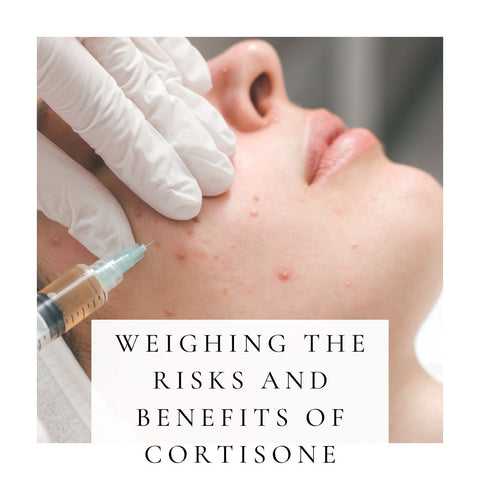
When choosing cortisone treatment, it is critical to balance the risks and advantages. Cortisone, or corticosteroid medication, can be quite helpful in the treatment of some medical diseases, but it is not without hazards. Cortisone treatment should be decided after consulting with a healthcare expert and taking into account the individual medical condition being treated. Here are some of the most important dangers and benefits to consider:
Benefits:
-
Anti-Inflammatory Action: Cortisone is a powerful anti-inflammatory medication that can rapidly reduce inflammation and alleviate associated symptoms like pain and swelling. This can provide significant relief from a variety of conditions, including arthritis, allergic reactions, and skin conditions.
-
Quick Relief: When cortisone therapy is used, symptoms are frequently relieved quickly. This is crucial for conditions that cause sudden pain or discomfort.
-
Treatment that is Precise and Targeted: Cortisone injections are administered directly to the affected area, allowing for precise and targeted treatment. This can be especially beneficial for conditions like cystic acne or inflamed joints.
-
Reduced Allergic Reactions: Cortisone can help manage severe allergic reactions, such as anaphylaxis, which can be fatal. In these situations, the benefits of cortisone frequently outweigh the risks.
Risks:
-
Side Effects: Prolonged or frequent use of cortisone can result in side effects such as skin thinning, bruising, delayed wound healing, and changes in pigmentation at the injection site.
-
Systemic Effects: Long-term or high-dose cortisol treatment can have systemic effects such as immune suppression, hormonal imbalances, and bone density loss. These side effects can increase the risk of infections, osteoporosis, and other complications.
-
Infection Risk: Cortisone injections pose a risk of infection at the injection site. This is relatively uncommon, but it can be a serious concern.
-
Atrophy: Cortisone injections can cause skin atrophy at the injection site, causing the skin to thin out and possibly develop depressions or indentations.
-
Temporary Relief: Cortisone therapy typically only relieves symptoms momentarily and does not treat the underlying illness. The original problem may return once the effects of the cortisone wear off.
-
Risk of Rupture: In some cases, cortisone injections can rupture the cyst or the affected area, resulting in complications or the need for surgical intervention.
-
Not Suitable for All Conditions: Cortisol may not be appropriate for all medical conditions. It is generally most effective for inflammatory conditions, but it may be less effective for structural issues or chronic degenerative conditions.
The potential risks and advantages of cortisone treatment for your particular condition should be thoroughly discussed with your healthcare provider. They can assist you in making an educated decision and developing a treatment plan that maximises benefits while minimising risks. In some cases, the benefits of cortisone treatment may outweigh the risks, whereas alternative treatments may be more appropriate in others.
Potential Side Effects and Risks of Cortisone Injections
Cortisone injections, while useful for lowering inflammation and giving relief from a variety of medical ailments, are not without hazards and adverse effects. The likelihood and severity of these side effects differ from person to person and are affected by elements like the cortisol dose, frequency of injections, and the individual's general health. It is essential to go over any potential concerns with your healthcare provider before starting a cortisone treatment. The following are a few of the most common risks and side effects associated with cortisone injections:
-
Pain or discomfort at the injection site, temporary flushing or redness, skin atrophy, skin discoloration, localised swelling, and infection are all common side effects.
-
Allergic reactions and tendon or ligament weakness are less common side effects.
-
Systemic side effects (primarily associated with long-term or high-dose use) include immune system suppression, osteoporosis, weight gain, glucose intolerance, diabetes, cataracts, and glaucoma.
It is important to note that cortisone injections are typically safe and effective when used as prescribed and under the supervision of a healthcare provider. However, in order to reduce the risks, it is critical to follow the recommended dosages, frequency, and follow-up appointments. Before receiving cortisone injections, discuss the potential side effects and risks with your healthcare provider, and report any unusual or concerning symptoms right away. Your healthcare provider will consider your specific medical condition when weighing the benefits of cortisone treatment against the potential risks.
Long-Term Considerations and Monitoring
When considering cortisone treatment, long-term considerations and monitoring are critical, especially if it entails prolonged or high-dose use. Monitoring ensures that the treatment is safe and effective, as well as allowing healthcare providers to handle any potential adverse effects or issues. Regular follow-up appointments, dose adjustment, monitoring for side effects, osteoporosis prevention, glucose monitoring, cataract and glaucoma screenings, adherence to treatment plans, communication with healthcare providers, weaning off cortisone, and lifestyle modifications are all important considerations for long-term cortisone treatment. Long-term use, on the other hand, should be continuously monitored, and potential side effects should be addressed as soon as possible to ensure that the medication remains safe and effective. The healthcare provider in charge of your care will walk you through these considerations and tailor the treatment plan to your specific needs.
Discussing Treatment Options with a Dermatologist
If you have skin conditions like cystic acne or other dermatological issues, it is critical to discuss treatment options with a dermatologist. A dermatologist is a medical professional who may offer expert advice and tailor-made treatment strategies to your unique needs. Schedule an appointment, prepare for the appointment, discuss your symptoms, ask questions, discuss your preferences, inquire about costs and insurance, understand the treatment plan, follow up, ensure compliance, and seek a second opinion to effectively discuss treatment options with a dermatologist. They have the knowledge to assist you in understanding your health, evaluating treatment alternatives, and developing a personalised strategy that suits your individual needs and concerns.
Choosing the Right Approach: Cortisone vs. Other Cyst Treatments
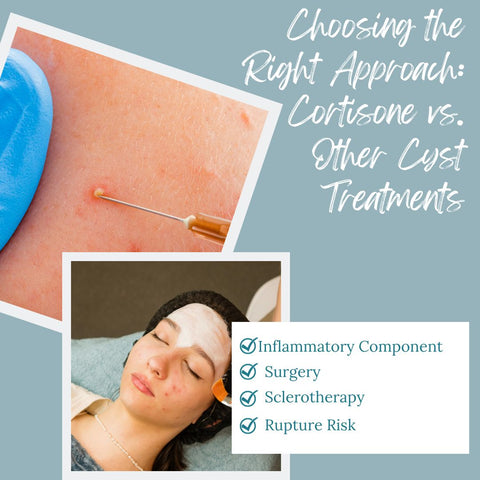
The type of cyst, its location, underlying causes, and the patient's unique circumstances all influence the best cyst treatment strategy, including the decision between cortisone injections and other treatments. Consider the following factors to help you make an informed decision:
Cortisone Injections:
-
Inflammatory Component: Cortisone injections are most effective for cysts with an inflammatory component, such as inflamed sebaceous cysts, ganglion cysts, or cystic acne. If the cyst is causing significant pain, inflammation, and discomfort, cortisone injections may provide immediate relief.
-
Location: Cysts in joints and soft tissues, close to the skin's surface, are frequently treated with cortisone injections. The injection makes it possible to target the affected area precisely.
-
Temporary Relief: It's important to understand that cortisone injections provide temporary relief from symptoms but do not address the underlying cause of the cyst. The cyst may reappear after the cortisone wears off.
-
Rupture Risk: Cortisone injections have the potential to rupture the cyst, especially if it is close to the skin's surface. Rupture can cause complications and may necessitate surgical intervention.
-
Expertise: Only qualified medical personnel who can administer cortisone injections accurately and safely should administer the medication.
-
Side Effects: Cortisone injections may cause skin thinning or discoloration at the injection site.
Other Cyst Treatment Options:
-
Non-Inflammatory Cysts: Cortisone injections may not be the best treatment for cysts that are not associated with inflammation or pain.
-
Surgery: Surgical removal (excision) may be required for cysts that are large, recurrent, or causing complications. This offers a more long-lasting fix but might leave scars.
-
Aspiration: Using a needle and syringe, aspiration entails draining the cyst. It is frequently used to diagnose fluid-filled cysts or to confirm a diagnosis by analysing the contents of the cyst.
-
Sclerotherapy: Sclerotherapy is used to treat certain types of cysts, such as ganglion cysts and vascular malformations. It entails injecting a sclerosing agent into the cyst in order to collapse it.
-
Observation: In some cases, especially for small, non-problematic cysts, a "watch and wait" approach may be recommended. The cyst is monitored for changes, and intervention is considered only if it becomes problematic.
-
Lifestyle Changes: Lifestyle changes such as dietary changes, proper skincare, or weight management may be beneficial in preventing or managing certain types of cysts.
The decision between cortisone injections and other therapies should be made in conjunction with a healthcare provider or specialist. They will assess your individual situation, the type of cyst, its location, and your medical history to determine the best course of action. In some circumstances, a combination of treatments may be required. It is critical to have an open and informed discussion with your healthcare professional in order to determine the most appropriate treatment for your specific condition.
Comparing the Effectiveness of Cortisone Injections
Cortisone injections are a powerful treatment for a variety of medical disorders, particularly those involving inflammation. Their success, however, can vary depending on the ailment being treated, its severity, and other individual characteristics. Here is a comparison of the efficacy of cortisone injections for various medical conditions:
-
Cystic acne: Cortisone injections can be very successful in reducing the swelling and discomfort brought on by cystic acne. They are often used for severe, painful acne cysts to provide rapid relief.
-
Allergic Reactions: Cortisone injections are valuable for managing severe allergic reactions, including anaphylaxis. They can reduce swelling quickly and prevent potentially fatal complications.
-
Inflammatory Joint Conditions: Cortisone injections are frequently effective in the treatment of inflammatory joint conditions such as rheumatoid arthritis or gout. They have the ability to reduce joint inflammation and pain, allowing for greater mobility.
-
Tendonitis and Bursitis: Injections can help with conditions like tendonitis (tendon inflammation) and bursitis (bursa sac inflammation). They help reduce pain and inflammation in affected areas.
-
Certain Skin Conditions: Cortisone injections can be used to reduce inflammation in some skin conditions, such as keloids or hypertrophic scars. This may help to reduce scarring.
Factors to Consider When Selecting a Cyst Treatment
Choosing the best cyst treatment requires carefully examining a number of aspects in order to ensure the most effective and safe approach for your unique problem. The type of cyst, cyst location, cyst size and severity, symptoms, underlying cause, medical history, risk tolerance, potential for recurrence, cosmetic concerns, treatment goals, cost and insurance coverage, consultation with specialists, alternative options, long-term considerations, and personal preferences are all important factors to consider when selecting a cyst treatment. Your provider will take these aspects into account, conduct a complete evaluation, and offer the best treatment option for your needs and preferences.
Tailoring Treatment for Individual Needs
Individualising cyst treatment is critical for offering the most effective and personalised care. Healthcare experts collaborate to create treatment programmes that consider the cyst's individual characteristics, the patient's overall health, preferences, and treatment goals. Comprehensive evaluation, patient-centered approach, customised treatment plan, symptom relief, risk assessment, medical history and health status, treatment goals, minimising risks, conservative vs. aggressive approaches, long-term considerations, communication and informed consent, alternative and complementary therapies, cosmetic concerns, follow-up and monitoring, holistic care, and patient education are the key principles for tailoring treatment for individual needs. This method leads to greater treatment outcomes and patient satisfaction. Healthcare providers are critical in guiding patients through the decision-making process and providing personalised treatment.
Conclusion: Navigating the Landscape of Cyst Treatment
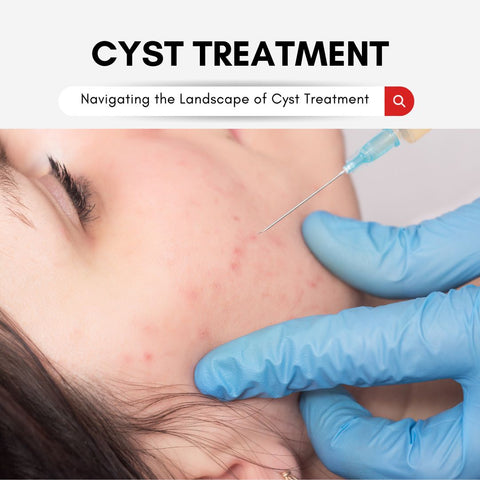
Navigating the cyst treatment landscape can be a complex and nuanced trip that demands careful consideration of many aspects, individual needs, and the exact characteristics of the cyst in issue. As we wrap up this discussion, consider the following key points: cyst diversity, symptom relief, individualised care, risk-benefit assessment, informed decisions, holistic care, alternative and complementary therapies, long-term considerations, follow-up and monitoring, and patient-centered care. The ability to modify and customise the approach to the individual demands of each patient is critical to the success of a treatment plan. This necessitates a collaborative effort between healthcare practitioners and patients based on trust, communication, and shared decision-making.





